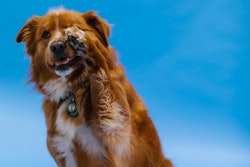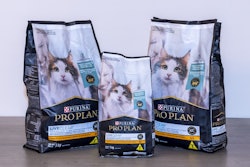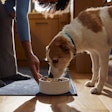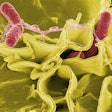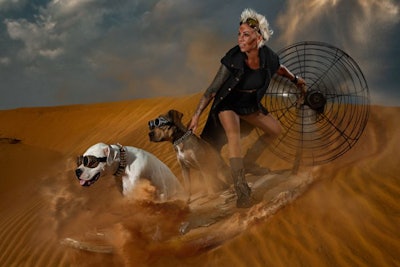
Dogs and cats abound in science fiction and horror movies, especially post-apocalyptic dystopias. That trope seems grounded in reality, considering the growth in the pet ownership during the ongoing COVID-19 pandemic, although wider demographic shifts also fuel pet population growth.
Post-apocalyptic pet ownership trends
In the nuked and desiccated Outback of "Mad Max 2," humanization of pet foods reached a new level, as Max shared a can of Dinky-Di wet dog food with his Blue Heeler. Dogs protected humans after the robot rebellion of the Terminator films, since only canines can sniff out the difference between a real person and a 6'2" skin-clad killing machine with a strong Austrian accent. In the vampire (book) or zombie (movie) infested end times of "I am Legend," a dog helps keep the main character sane. Another Will Smith flick, "Men in Black," features Orion the cat guarding the entire universe. In "Alien," characters repeatedly risk their lives for the sake of Jones the cat, despite being stalked by a ravenous xenomorph. After a virus decimates humanity and most dogs in "The Stand," Kojak the dog fights off possessed wolves on his way to join Mother Abagail. Thackery Binks, although technically a black cat only in form, protects the children of Salem from the three weird sisters in
"Hocus Pocus."
Some pets have helped heroes fend off various monsters, villains too find joy in their pets. Jame Gumb cared deeply that the woman he planned to skin and wear didn’t hurt his dog, Precious, in "Silence of the Lambs." Perhaps the archetypal evil pet, Ernst Blofeld takes comfort in stroking his white Persian cat in the James Bond books and films, as lampooned by Dr. Evil’s Mr. Bigglesworth and Dr. Claw’s Mad Cat from Inspector Gadget.
Pet food companies have latched onto this sci-fi, horror entertainment trope. Recently, a series of Mars Petcare’s Pedigree advertisements featured dogs in surreal situations leading to their eventual adoption. In one the dog was left behind after aliens abducted his owner, while in another the vampire gave up his dog for adoption so his pet could frolic with other day-walking dogs.
Ongoing pet population growth
Leaving fiction aside, pets have helped people get through the real-life difficulties of the ongoing pandemic. In many nations, especially the U.S., a surge in pet purchases and adoptions accompanied lock-downs as people looked for new non-contagious companions for themselves and fur baby playmates for their real children.
Dogs, cats and other pets occupy such an important role in people’s lives that even disasters, both real and fictional, can’t break that bond. Despite continuing supply chain problems, pet food companies weathered the pandemic better than many other sectors. It’s hard to imagine a catastrophe that could derail the pet food industry, since both heroes and villains love their pets to the end.
Regardless of the pandemic, pet population growth continues, as David Sprinkle publisher and research director of Packaged Facts reported in Petfood Industry. Even before COVID-19, dog ownership grew in key demographics traditionally under-represented as dog owners during the past decade. Specifically, households without children increased their dog ownership by 27% in the past decade, while that demographic increased by 20% as part fo the overall population. Similarly, retiree households increased by 35%, while the percentage of those homes with a dog increased 67%.
“This trend is spurred by several dynamics, including the graying of the U.S. population and the shifting composition of American households, but also reflects the deepening appeal of dog ownership to a widening range of demographics,” he wrote.



